Clothing Label Requirements: What Info is Mandatory?
Are you a clothing designer, a small business owner launching your own clothing line, an apparel manufacturer operating domestically or internationally, an importer bringing clothing into a new market, or anyone involved in selling clothing? Navigating the world of clothing labels can be complex, and it’s understandable to feel confused by the intricate legal requirements.
Perhaps you worry about non-compliance, potential penalties, and the repercussions of failing to meet labeling regulations. Understanding the subtle differences in international labeling standards can also pose a challenge. Ultimately, you want to create clear, informative, and trustworthy labels that resonate with your customers.
The consequences of non-compliant labels are significant, ranging from hefty fines and product recalls to damage to your brand’s reputation and potential legal issues. Conversely, clear and informative labels build consumer trust and ensure customer satisfaction.
This article provides a comprehensive guide to understanding and fulfilling clothing label requirements, empowering you to navigate the legal landscape, ensure compliance, and create informative, customer-friendly labels that contribute to the success of your clothing business.
1. Understanding mandatory clothing label information
1.1 Fiber content: Detailing fabric composition
Accurately detailing fiber content is a mandatory element of clothing labels in many jurisdictions, a crucial aspect of consumer protection, particularly in the United States under the Textile Fiber Products Identification Act (TFPIA) and the European Union via textile regulations.
You are legally required to list the fiber percentages in descending order by weight, for instance, “60% Cotton, 40% Polyester.” The regulations also include a 5% rule that allows fibers comprising less than 5% of the total weight to be listed as “other fibers,” unless they serve a specific functional purpose such as Spandex, which must be disclosed.
Proper labeling extends to garments with multiple layers and varying fabric sections, such as a lined jacket. Standardized fiber names, as approved by the FTC (US) and the EU textile regulations, must be used to ensure consistency and compliance. It is also worth noting that trim exemptions exist; however, these do vary and it is important to always check current regulations.
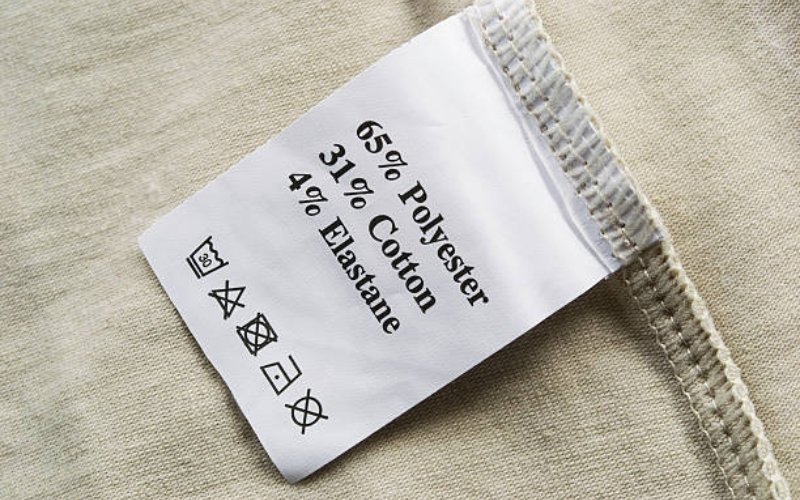
1.2 Country of origin: Specifying manufacturing location
Specifying the country of origin, often displayed using “Made in…” labelling, is another mandatory aspect of clothing labels which informs consumers about where the garment was produced. In the United States, there are nuances to the “Made in USA” label.
If a garment is assembled in the USA and all its materials are sourced there, it can be labeled “Made in USA.” However, if the garment is assembled in the USA but uses imported materials, the label must state “Made in USA of imported materials” or use similar wording, which provides a clear description of the supply chain.
For imported goods, the label must clearly state the country where the substantial transformation, the process that gives the product its essential character, occurred. Importantly, EU regulations do not have a harmonized approach to country of origin labeling, so the labeling of individual member states may differ.
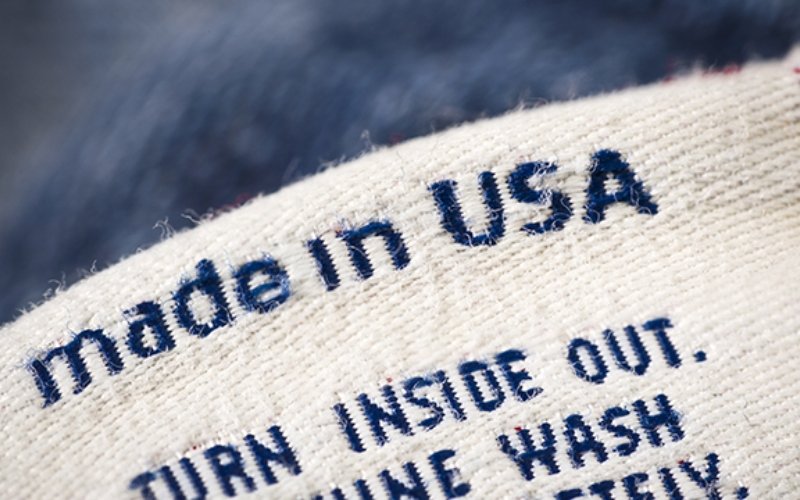
1.3 Manufacturer identity: RN number and company name
To ensure accountability and facilitate consumer inquiries, it’s essential to accurately identify the manufacturer or importer on clothing labels. In the United States, you must include either the full company name, as the business conducts operations, or the RN (Registered Identification Number). You can obtain an RN free of charge by applying on the FTC website (https://rn.ftc.gov/).
The RN or company name must be clearly legible. In the European Union, the name and address of either the manufacturer (if located in the EU) or the importer (if manufactured outside the EU) are required. This enables consumers and regulatory bodies to easily identify the responsible party.
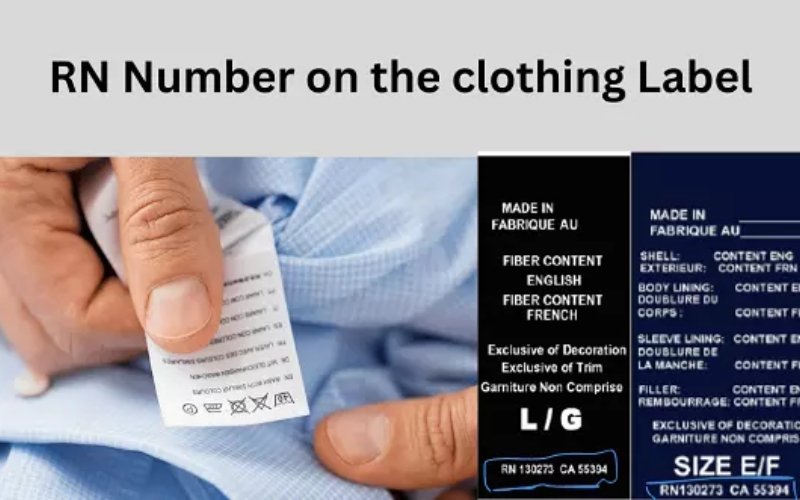
2. Beyond the basics: Additional labeling considerations
2.1 Care instructions: Providing garment care guidance
Providing clear, accurate, and informative care instructions, while not universally legally required throughout the EU, is a crucial aspect of clothing labels, especially within the United States, where the Care Labeling Rule mandates this.
Standardized care symbols, which can be understood internationally, are often used to communicate washing, drying, ironing, bleaching, and dry-cleaning instructions. You can find reliable resources for these symbols, such as the FTC’s guide or the GINETEX website.
However, care instructions require a “reasonable basis,” meaning manufacturers must have evidence, often through testing, to support the instructions. Specific instructions should include washing details (water temperature, machine wash vs. hand wash), drying guidance (tumble dry, line dry, dry flat), ironing temperature settings, and bleaching recommendations (do not bleach, chlorine bleach, non-chlorine bleach).
If dry cleaning is recommended, include details such as “dry clean only,” “any solvent,” or specific solvent restrictions.
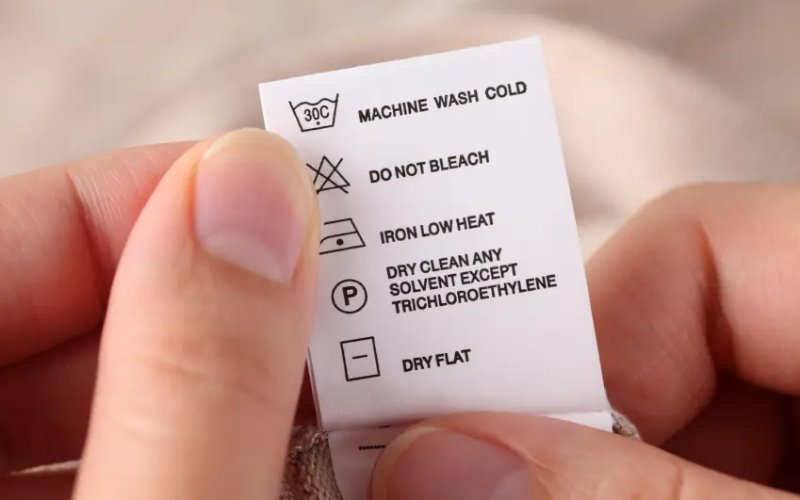
2.2 Size labeling: Ensuring accurate fit information
Though not always a strict legal requirement, clear and consistent size labeling is critical for customer satisfaction and reducing returns. Use an appropriate sizing system for your target market (US, EU, UK, etc.). Consider including specific measurements, like inseam, waist, or chest measurements, particularly for garments with variable fits or those sold online.
This level of detail greatly assists consumers in selecting the correct size, ultimately enhancing their shopping experience and reducing the likelihood of dissatisfaction. Consistent and transparent sizing builds customer trust and increases the likelihood of repeat purchases.
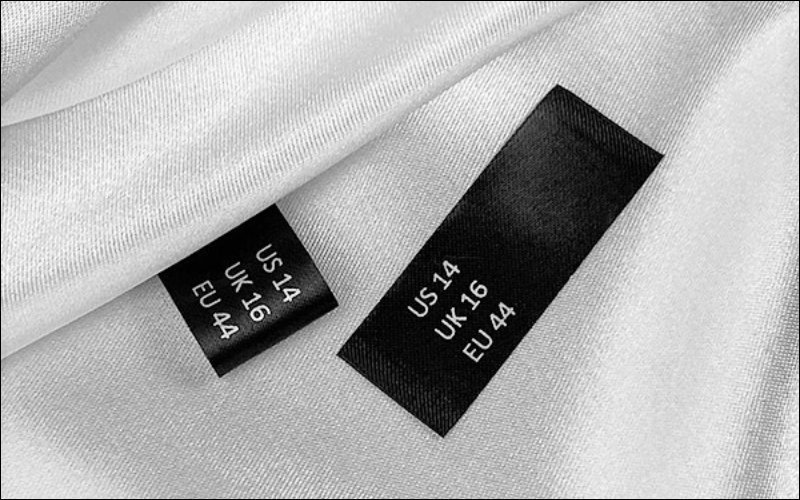
2.3 Special labeling requirements: Flammability, allergens, and nore
Beyond basic labeling, special labeling requirements are necessary to ensure consumer safety and transparency. Flammability standards, particularly for children’s sleepwear, are paramount. In the US, these garments must meet specific flammability standards set by the CPSC (https://www.cpsc.gov/).
The UK, for example, uses the BS-5722 standard. Where garments don’t meet the standards, labels must warn “KEEP AWAY FROM FIRE”. Disclosing potentially allergenic materials or chemicals, especially those known to cause skin irritation, is also essential.
Similarly, any animal-derived components (leather, fur, down) need to be clearly declared. Other requirements may include a UPF rating for sun-protective clothing, along with links to relevant testing standards, or verifiable recycled content claims, all of which add to the consumer’s ability to make an informed purchase.
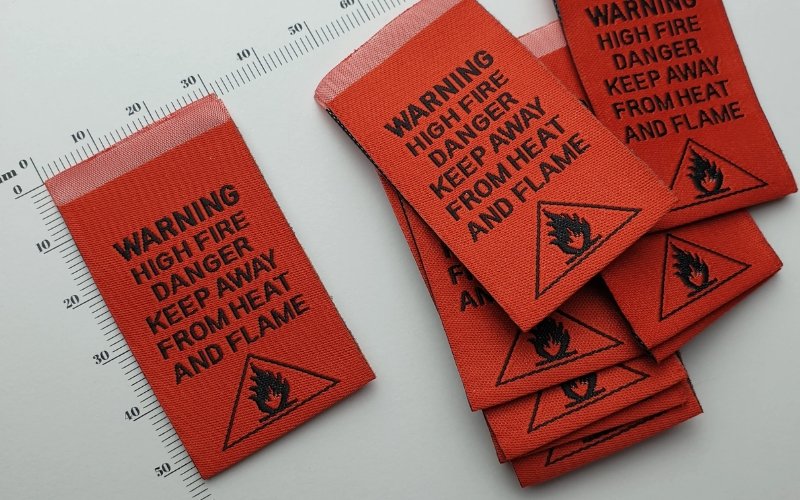
3. Label design and presentation: Ensuring clarity and compliance
3.1 Label placement and attachment: Permanent and visible
Proper label design and presentation are crucial not only for compliance but also to enhance the consumer experience. The label must be permanently attached to the garment, with sewn-in labels generally being the preferred method.
Proper placement of the label is also important, as there are specific placement requirements. In the United States, the country of origin must be on a label attached to the inside center of the neck (for garments with collars) or in a conspicuous location, where it can be easily seen.
Other required information may be placed on the same label or on a separate label, but all labels must be easily visible to the consumer at the point of sale.
3.2 Language and legibility: Clear and understandable information
Beyond placement, the language and legibility of the label are also vital. In the United States, the required language is English; Spanish is acceptable in Puerto Rico. In the EU, labels must be in the official language(s) of the country where the garment is sold.
This ensures the information is accessible to the consumer. It is of the utmost importance that the text be clear, legible, and easy to understand. This involves using an appropriate font size and sufficient contrast between the text and the label background. Durable printing is also paramount; the label must remain legible throughout the garment’s lifespan, even after repeated washing and wear.
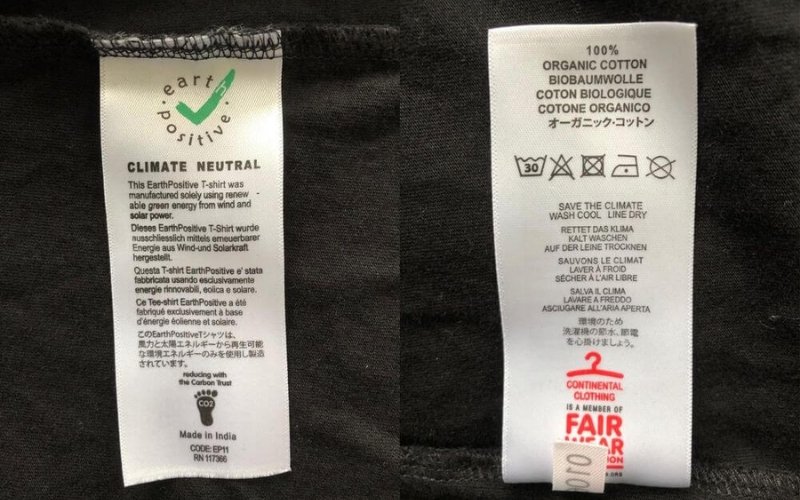
4. Regional variations in clothing labeling laws
4.1 United states labeling regulations
The United States has specific regulations that govern clothing labels. The two key regulations enforced by the FTC are the Textile Fiber Products Identification Act (TFPIA) and the Care Labeling Rule. The TFPIA requires disclosure of fiber content, country of origin, and manufacturer information.
The Care Labeling Rule requires the provision of care instructions. You can find comprehensive information about these regulations and related resources on the FTC’s website (https://www.ftc.gov/). The CPSC (Consumer Product Safety Commission) is another agency that is relevant, specifically regarding flammability.

4.2 European union labeling regulations
In the European Union, the general EU Textile Regulation (Regulation (EU) No 1007/2011) sets forth requirements for clothing labeling. One important factor is the EU Regulation which has specific requirements for animal-derived materials: any such materials must be clearly labeled as “Contains non-textile parts of animal origin.”
A lack of complete harmonization exists for country of origin labeling, meaning that individual member states may have additional, specific requirements that go beyond the general regulation.
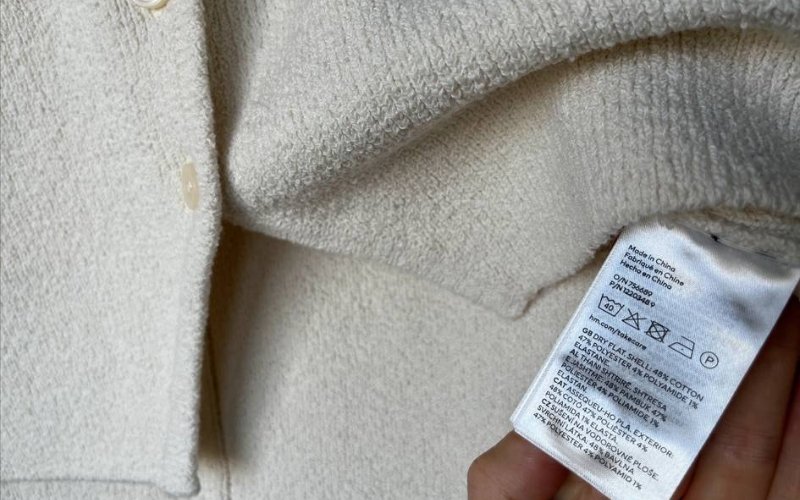
4.3 Other international labeling requirements (Brief Overview)
Outside of the US and EU, labeling requirements vary widely. For example, in Australia, fiber content labeling is no longer mandatory under federal law, but the state of New South Wales has specific requirements that must be met. In the UK, although accurately identifying a garment’s country of origin is not always legally required, it is essential to avoid misleading consumers.
There are also important flammability regulations, BS-5722, that must be followed. Strong, and further research on the specific labeling requirements of each export market is strongly suggested, because regulations vary widely.
5. FAQs about clothing label requirements
5.1 What is an RN number, and do I need one?
An RN (Registered Identification Number) is a number issued by the FTC to US-based businesses that manufacture, import, distribute, or sell products covered by the Textile, Wool, and Fur Acts. You need an RN if you fall into one of these categories. You can apply for one for free on the FTC website.
5.2 Can I use symbols instead of written care instructions?
Yes, in many cases, you can use internationally recognized care symbols. However, the symbols must be clear and understandable, and you must have a reasonable basis for the care instructions they represent. Some regions (or specific retailers) might require written instructions in addition to symbols.
5.3 What are the penalties for non-compliant clothing labels?
Penalties for non-compliance can vary depending on the specific violation and the country/region. They can include fines, seizure of goods, product recalls, and even legal action. It’s crucial to ensure your labels meet all applicable requirements.
5.4 How do I label clothing made from multiple materials?
List each fiber in descending order by weight percentage. If a fiber makes up less than 5% of the total weight, you can generally list it as “other fibers” (unless it has a functional significance). For garments with distinct sections (e.g., a lined jacket), label the fiber content of each section separately.
5.5 Where can I find more information about labeling requirements for a specific country?
Start by researching the relevant government agencies responsible for textile and apparel regulations in that country. The FTC website is a good resource for US requirements, and the European Commission website provides information on EU regulations. For other countries, search online for “textile labeling regulations [country name].”
6. My Pack Love – Providing services for clothing labels
Navigating the complexities of clothing labeling can be demanding. My Pack Love specializes in creating high-quality, custom clothing labels designed to meet all legal requirements while also enhancing your brand. We offer a wide array of options, including woven labels, heat transfer labels, printed fabric labels, hang tags, and care labels, catering to diverse branding needs.
Our experienced design team can assist you in creating labels that are both informative and visually appealing. We understand the intricacies of clothing labeling regulations and can guide you through the process to ensure compliance.
Whether you are a small business or a larger operation, My Pack Love can provide expert solutions. Get a free quote today and let us assist you in creating the perfect labels for your garments! Visit our website or contact us to learn more about our services and how we can help your brand succeed.
We have over 10 years of experience in the label industry, and serving businesses of all sizes, combined with our expertise in international labeling requirements.
Read more:
By investing the time to understand these requirements and choosing reliable partners like My Pack Love, who specialize in crafting high-quality, compliant labels, you can avoid costly penalties, foster customer loyalty, and establish a strong brand identity. Remember to stay informed about evolving regulations and proactively seek guidance when needed. The attention you pay to your clothing labels is an investment in your brand’s long-term success and the satisfaction of your customers.






















